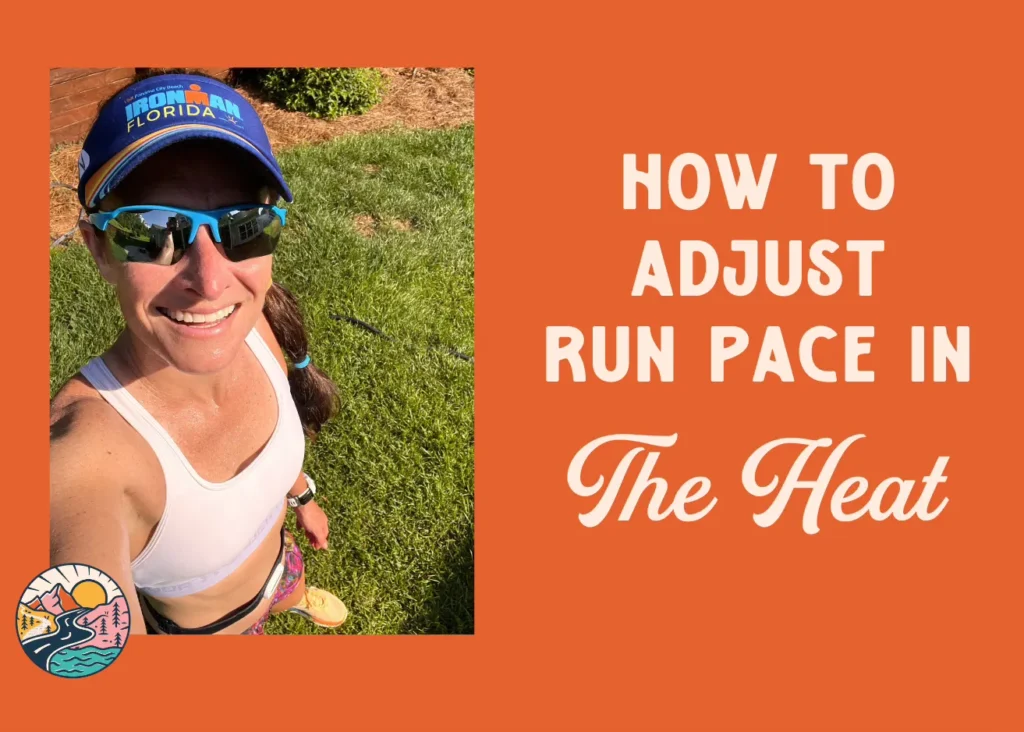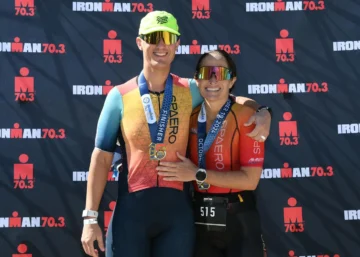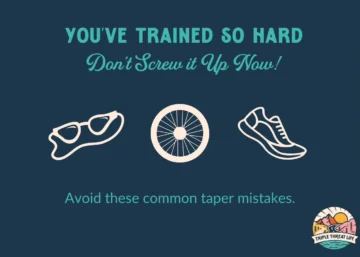
Running in the heat and humidity can be brutal. I know because I live in Florida.
Last weekend, we did a 12-mile trail run in 90°F. My husband, Matt, described the experience as “feeling like a piece of meat roasting inside a sous vide bag.”
Not pleasant.
But alas, we have chosen to live in the Sunshine State and along with the sea breezes and palm trees, we must accept the mind-numbing heat and gasp-inducing humidity.
Your ability to run in the heat depends on a few different factors: your physical fitness, how much you sweat, your level of heat acclimation, and most importantly the weather.
How much does heat and humidity affect your pace?
Luckily, Matt is a self-described “weather nerd,” so we’ll explain.
First, let’s review some meteorological terms and discover what they mean for runners:
- Temperature- Indicates how hot or cold the air is. Temperature also directly affects how much moisture the air can hold: warm air can hold more moisture than cold air. For runners, temperature plays a big role in both comfort and performance. When it’s hot, your body tries to cool itself off by producing sweat. As the sweat evaporates, it takes excess body heat with it, which cools you off.
- Humidity: Humidity is the concentration of water vapor in the air. High humidity makes it feel hotter than the actual temperature might suggest. Because there’s already water vapor in the air, your sweat doesn’t evaporate as easily, which makes it harder to cool off. For runners, high humidity places extra strain on the body and can make an easy run feel hard.
- Dew Point: (This one is important) The dew point is the temperature at which air becomes fully saturated with moisture (100% relative humidity). This causes water vapor to condense into liquid. Think about dew on grass or fog on the road. A higher dew point indicates that there’s moisture in the air. Running in a dew point above 60°F (15.5°C) starts to feel uncomfortable, and when it’s above 70°F (21°C), it can feel oppressive.
Formulas to adjust running pace
Now you know how temperature, humidity, and dew point can affect how a run feels, but how can you use that information to your advantage?
Formula #1: Find your heat-adjusted pace.
Here’s an easy formula you can use to adjust your running pace in the heat.
Base Pace (min/mile) + [(Dew Point°F – 60) x 0.025] = Adjusted Pace (min/mile)
- Base pace- is your typical running pace in ideal conditions.
- Dew point- in degrees Fahrenheit.
- 60- Running performance will be affected above this dew point threshold.
- 0.025: Additional minutes per mile to add for each degree the dew point exceeds 60°F.
For example, let’s say your base pace is 9:00 minutes per mile and the dew point is 70°F.
9:00 + [(70−60)×0.025] = 9:25 minutes per mile.
So you can see how dramatically dew point can affect your pace. But this formula doesn’t take into account temperature, which is something else to consider.
If you’re really a numbers person and want to dig a bit deeper, Coach Mark Hadley has a unique method of combining both temperature and dew point to make pace adjustments.
Formula #2: Add temperature to dew point and adjust your pace based on the total.
Temperature°F + Dew Point°F = total used to adjust running pace.
For example, let’s say the temperature is 90°F and the dew point is 70°F.
90 + 70 = 160
These are Coach Hadley’s recommendations:
- 100 or less: no pace adjustment
- 101 to 110: 0% to 0.5% pace adjustment
- 111 to 120: 0.5% to 1.0% pace adjustment
- 121 to 130: 1.0% to 2.0% pace adjustment
- 131 to 140: 2.0% to 3.0% pace adjustment
- 141 to 150: 3.0% to 4.5% pace adjustment
- 151 to 160: 4.5% to 6.0% pace adjustment
- 161 to 170: 6.0% to 8.0% pace adjustment
- 171 to 180: 8.0% to 10.0% pace adjustment
- Above 180: hard running not recommended
So with this example, we’re looking at a 4.5%-6% pace adjustment.
If you go with a middle value of 5%, this is how to adjust your pace.
- 7:00 min/mile: 5% slower = 7:21 min/mile
- 7:30 min/mile: 5% slower = 7:52 min/mile
- 8:00 min/mile: 5% slower = 8:24 min/mile
- 8:30 min/mile: 5% slower = 8:55 min/mile
- 9:00 min/mile: 5% slower = 9:27 min/mile
- 9:30 min/mile: 5% slower = 9:58 min/mile
- 10:00 min/mile: 5% slower = 10:30 min/mile
- 10:30 min/mile: 5% slower = 11:01 pace min/mile


